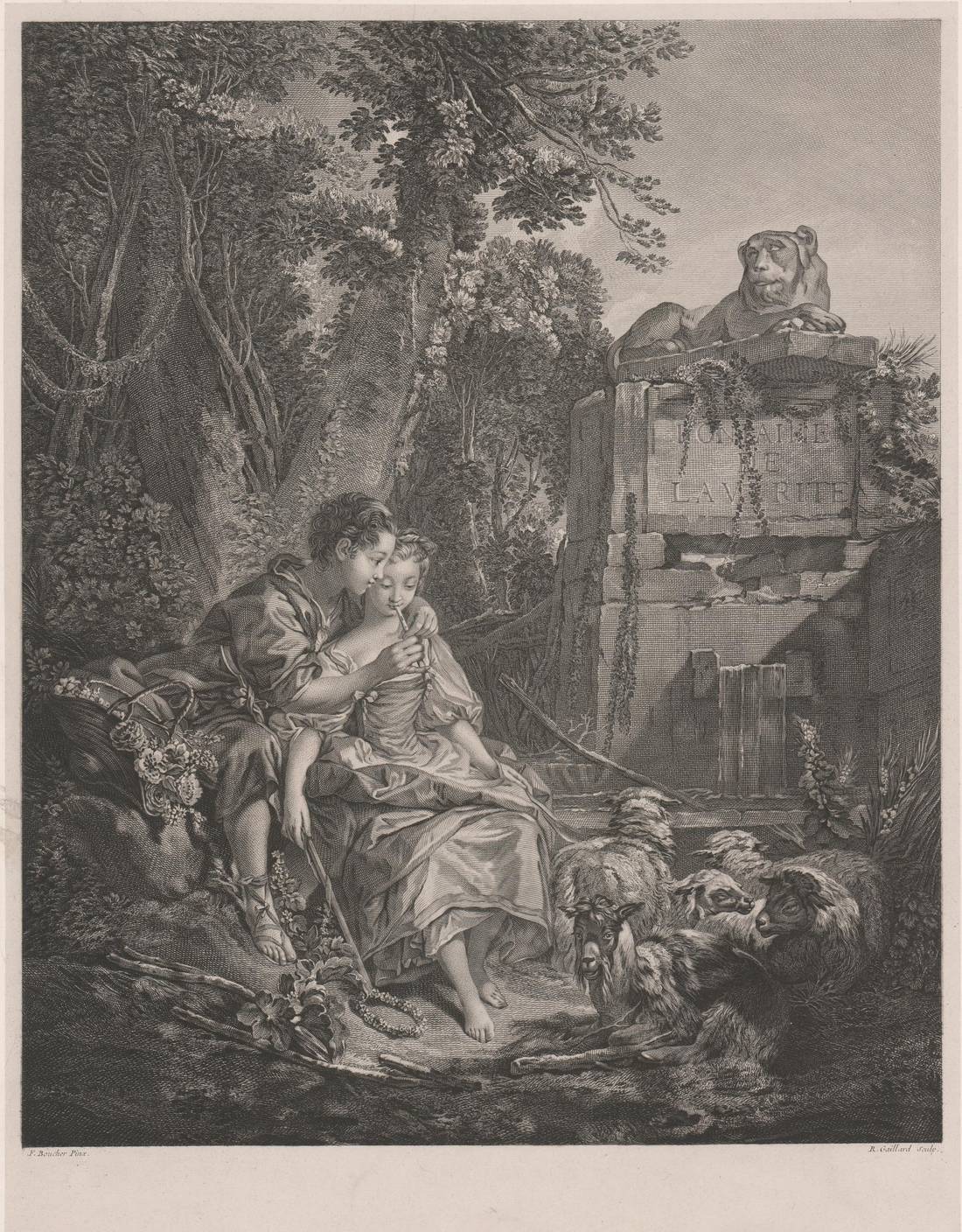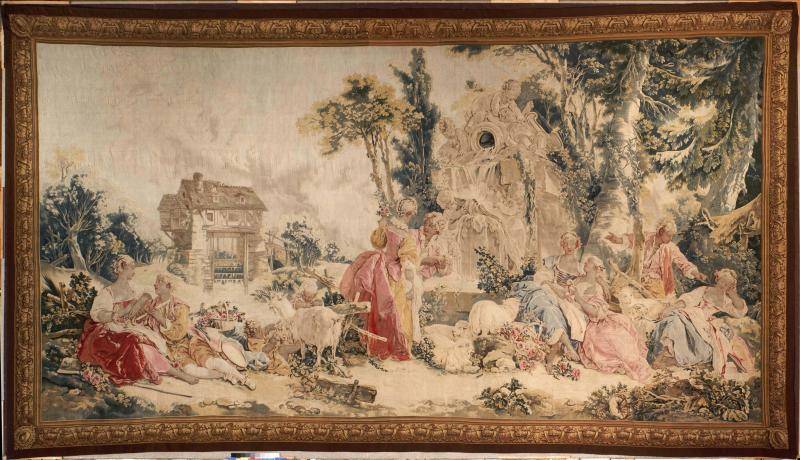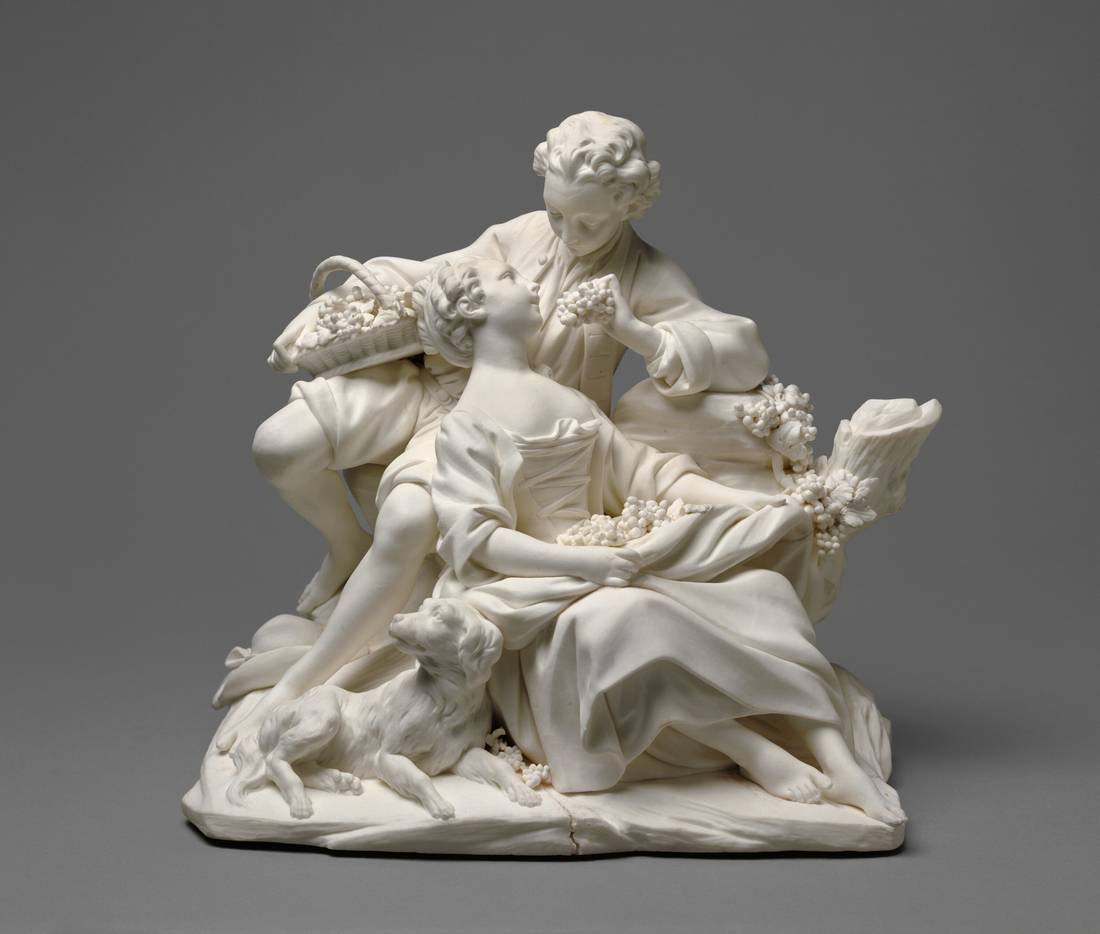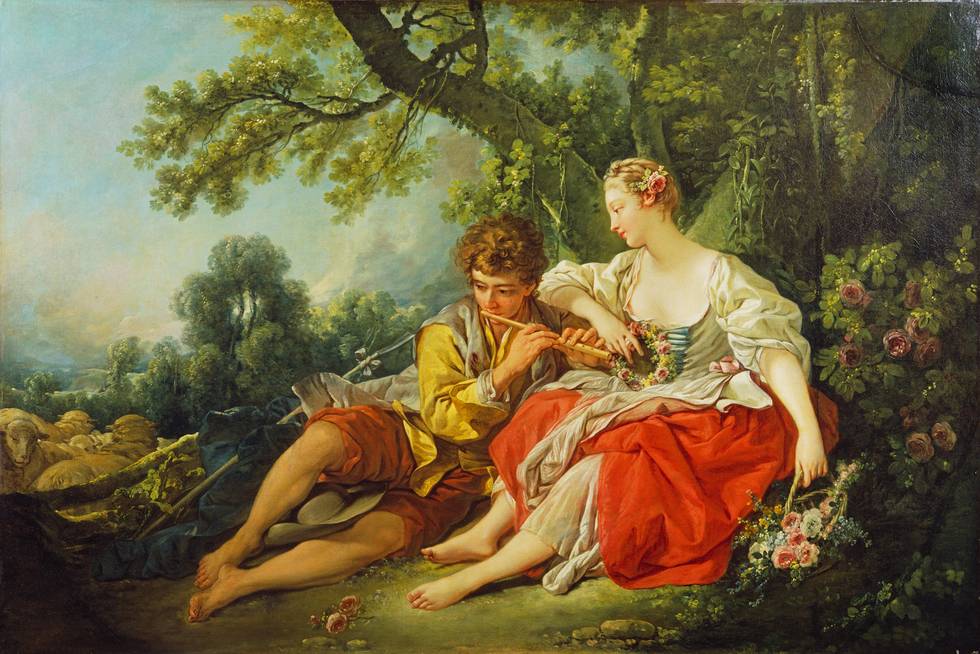
…that idyllic world invented by Boucher… The sheep are shampooed, the shepherdesses wear bodices with rows of ribbons, and their complexions quite lack that sun-burnt rustic look, while the shepherds look like ballet dancers. But all of this has an irresistible charm and is a lie more delightful than the truth. (Théophile Gautier, 1867)
The pastoral is Francois Boucher’s most original and influential contribution to eighteenth-century French painting. He was far from being the first artist to take the lives and loves of shepherds and shepherdesses as his subject. On the contrary, the classical tradition of pastoral poetry had already played a major role in shaping European art and culture by the time he was born. What Boucher achieved was to devise a new formula for pastoral painting that proved hugely popular. His shepherds and shepherdesses were reproduced on a massive scale, in prints, on textiles and as ceramics.
ㅤ
Please drag left or right to browse the gallery and click on an object to expand it.
However, Boucher’s pastorals are also the aspect of his work for which he has been most fiercely criticised. Towards the end of the artist’s career, the philosopher and art critic Denis Diderot (1713-1784) denounced them for what he saw as their false, over-refined character in his reviews of the regular exhibition known as the Salon. ‘Will I never be done with these cursed pastorals?’, he complained in 1765. Later, the British landscape painter John Constable (1776-1837) similarly characterised Boucher’s work and, more particularly, his pastorals as ‘the climax of absurdity to which the art [of landscape] may be carried, when led away from nature by fashion’.
This type of criticism is beside the point, however, insofar as it holds Boucher’s pastorals to a standard of truthfulness that that were never intended to meet. Theories of pastoral poetry in eighteenth-century France were based on the idea that the purpose of such poetry was to give pleasure to readers by conjuring up the image of a simple, carefree life that allows love to blossom. It was recognised that ancient pastoral poets such as Virgil had depicted the rural life of their own time, but it was also agreed that it was impossible to address the hard lot of modern peasants without defeating the very purpose of pastoral.
Some French artists before Boucher offered a version of pastoral that did at least acknowledge the existence of rural labour. The engraver Claudine Bouzonnet Stella (1636-1697) published under the title of Pastorals a series of sixteen prints after designs by her uncle Jacques Stella (1596-1651) that includes idealised scenes of harvest and other agricultural activities. However, pastoral painting in the early eighteenth century typically featured elegant figures engaged in amorous dalliance, with only such details as a shepherd’s crook or a few sheep to identify them as peasants rather than aristocrats, as, for example, in the work of Nicolas Lancret (1690-1743).
Boucher’s early work includes a pair of paintings of this type. Commissioned as overdoors for an aristocratic Parisian residence, the Hôtel de Soubise, both paintings depict a shepherd courting a shepherdess. The Galant Shepherd shows an extremely elegant couple, apparently clad in silk and satin, while The Pleasing Shepherd features marginally more down-to-earth figures, at least in the case of the shepherdess, who is barefoot. When Boucher painted them in the late 1730s, he had already painted rustic scenes featuring cottages, cows, chickens and the like, but these two paintings seem to be his first pastorals in the strict sense.
However, it was only in the mid-1740s that Boucher began painting pastorals on a regular basis. Exemplary of his contribution to his genre is the pair of large paintings in the Wallace Collection now known as Pastoral with a Couple by a Fountain and Pastoral with Bagpipe Player, which are dated 1749. As with the paintings for the Hôtel de Soubise, the focus is on a single pair of lovers, even though a third person is present in both cases. The clothing remains improbably colourful but is less rich and not beribboned; all the figures are barefoot. They also appear much younger; their rather blank expressions reinforce the impression of childlike innocence.
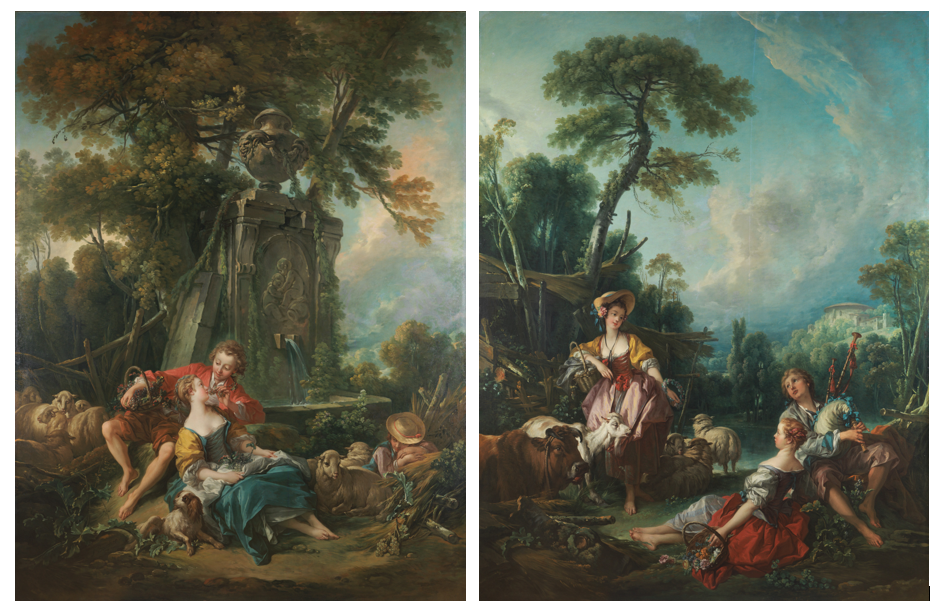
For his contemporaries, Boucher offered a more convincing version of pastoral than had his predecessors. In 1753, the writer Jean-Bernard Le Blanc (1707-1781) declared that the artist had introduced into the genre a simplicity and a naivety not always possessed by the shepherds of Fontenelle. (Bernard Le Bovier de Fontenelle (1657-1757) was the writer who had done the most to shape the theory and practice of pastoral in France since the late seventeenth century). Le Blanc went so far as to call Boucher the creator of the genre that he practised, thereby identifying him as the first true painter of pastorals.
Boucher’s invention of this new form of pastoral parallels innovations in musical theatre. The playwright Charles-Simon Favart (1710-1792) was similarly praised for introducing a touching innocence into the established genre of comic opera with his evocations of young love among countryfolk. Boucher is known to have provided stage designs for Favart and, in turn, often borrowed the scenarios of his pastoral paintings from comic operas such as Les Vendanges de Tempé (The Grape Harvest of the Vale of Tempé, 1745). Boucher may also have based the costume of his shepherdesses on that worn on stage by Favart’s wife, Marie-Justine Duronceray (1727-1772).
At least part of the original appeal of Boucher’s pastorals was therefore that they presented scenes already familiar and popular from the stage, such as a shepherd feeding grapes to his beloved or serenading her on a wind instrument. They were more accessible than his pastoral paintings set in the ancient world, in which the figures wear classical draperies. One example in the Wallace Collection may be based on the ancient Greek author Longus’s pastoral romance, Daphnis and Chloe. Boucher only rarely painted such subjects, no doubt because they were less popular than his modern pastorals.
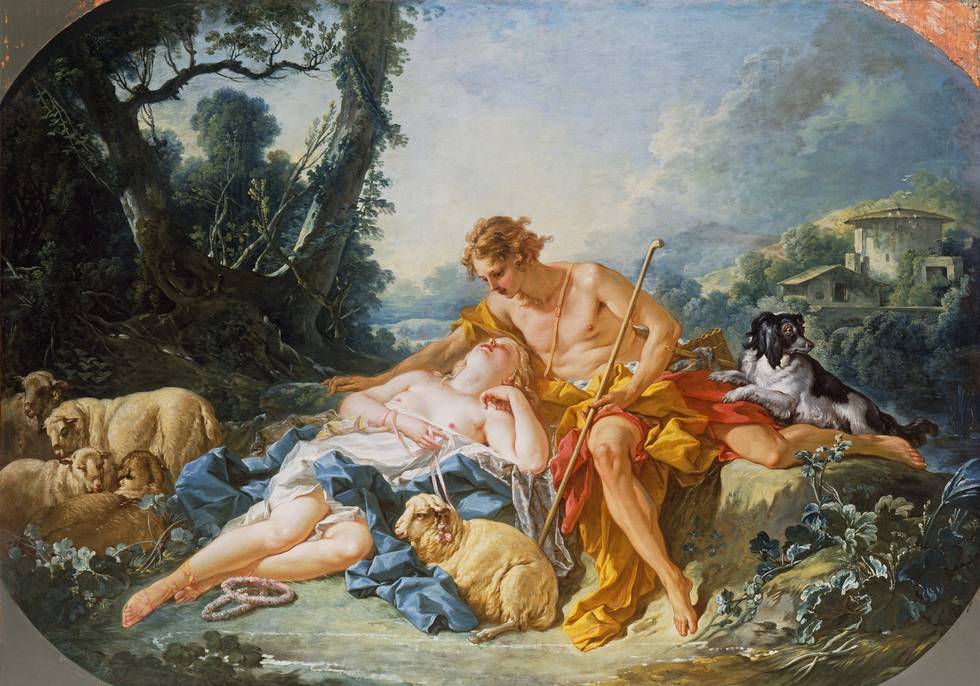
What are we to make of Boucher’s pastorals today? We could condemn them on the grounds that they are complicit in the exploitation of eighteenth-century French peasants whose actual hardships they gloss over in order to cater to the nostalgic fantasies of a courtly and urban elite. We might also, however, reinterpret these paintings in the light of current concerns. One aspect worth reconsidering is the gender ambiguity of Boucher’s shepherds and shepherdesses, who share a uniform prettiness. His boys who look like girls and girls who look like boys surely have something to say to us now.
This article was written by Dr. Emma Barker, Senior Lecturer In Art History at The Open University.
